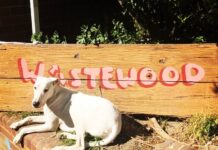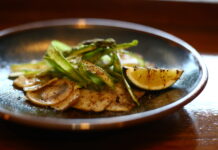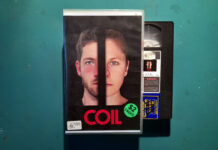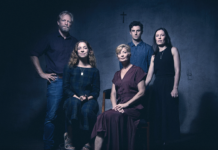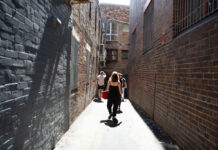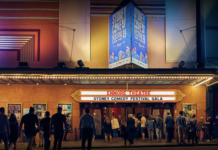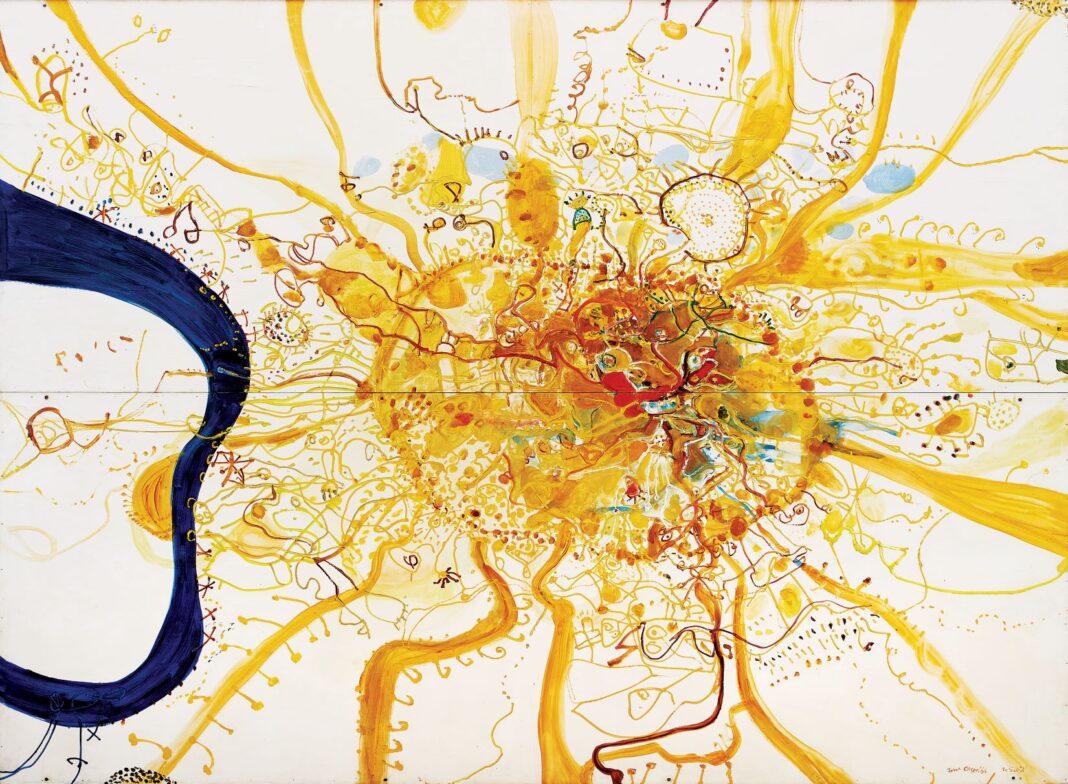John Olsen failed at his first attempt to get into the National Art School.
It was 1945, and the teenage Olsen was taking the school’s entrance exam, along with a large number of recently de-mobilised soldiers who were trying to get on with their lives post World War 2.
“Since there were no paintings or books in the house my art was about comics,” Olsen explained at the launch of the ‘Goya’s Dog’ exhibition.
“So I thought it would be good to learn how to draw properly, so I applied to the school.”
The exam took the form of a conventional still life drawing, and the examiners produced a banana and an apple, two bottles and a fork for the applicants to draw.
Olsen got to work along with the soldiers, many of them – as he recalls – still with yellow faces from the effects of malaria and the quinine mediation.
“I have to tell you I failed, I came a gutsa,” Olsen said.
It wasn’t long, however, before the school welcomed him. After a few classes at the Julian Ashton School, Olsen entered NAS in 1946 and began a career which has made him perhaps the school’s most famous alumni.
But the association didn’t end there, as he explained.
“Many years passed and I lived in Spain and came back to Australia and painted ‘Spanish Encounter’ (in 1960),” he says.
“And then I was asked to teach at the school.”
Fast forward to 2021, Olsen is 93 years old, a NAS Fellow and is still painting. Old age, he said, is a “wonderful thing”and he is “more entranced with the dark side.”
“Not in a mournful sense, but in a sense of enquiry.”
Some of Olsen’s most recent work is part of the ‘Goya’s Dog’ exhibition, which comprises 60 of his major works, sketchbooks and drawings, many of them from private collections which haven’t been seen publicly for many years.
They come not only from his time in Spain in the 1950s, but from sojourns in South Australia – which produced ‘Clarendon’ (the Urban Village cover image) – and from various periods in his life.
There is even a water colour of Olsen’s friend, the celebrated painter Lloyd Rees, in the bath. Painted in 1987, Rees was in his nineties, as Olsen is now.
‘Goya’s Dog’ is a painting Olsen did in 1985, a response to seeing Goya’s ‘The Drowning Dog’ at the Prado Museum in Madrid. It inspired not only the ‘Goya’s Dog – Life Escaping a Void’ painting, but continues to inspire Olsen to this day.
While the Olsen show is an important one for NAS, NAS continues to be important to Olsen.
He is, he said, “very proud of this place” which is precious as the “only art school that teaches a full practice.”
Other art schools, he said, taught about art, but not how to be an artisan.
“An artisan is one who can work with their hands, in co-ordination with the mind,” he said, and this ability was critical in the creation of significant art.
Artists, said Olsen, were all struggling with the limitation of facing the “great encyclopedia of mankind’s marks”, dating from the time of early cave painting.
They should remember, however, that in the event of a “terrible catastrophe” the last thing to be exhumed form civilization would the “final mark” made by artists.
“Forget the avant garde,” said Olsen. “The primary mark is the essence of what this is about.”
The National Art School presents John Olsen: Goya’s Dog until August 7 at the NAS Gallery.


